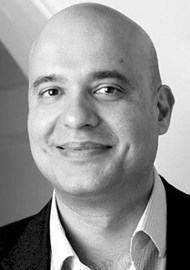We are seeing many advances in laryngology: from the lab, from equipment manufacturers and from developments in surgical techniques.
The field of laryngology has been under constant change in recent years, with the introduction of new technologies and research. The most important change has been the shift of many procedures performed in the operating room to awake interventions in the ‘clinic’, allowing for patient convenience, safety and reduced cost [1]. This article will not discuss this trend, but instead will provide an insight into recent developments in laryngeal surgery.
Platelet-rich plasma (PRP) injection into the vocal folds
Restoring the superficial lamina propria of the vocal folds to treat vocal fold scar, sulci and atrophy by using tissue regenerative interventions has been heavily studied in the past decade. Recent research in animal models and human studies have proven the positive effects of stem cell and growth factor injections for the prevention and treatment of vocal fold scarring and atrophy [2–6].

Figure 1: APrevent® Vocal Implant System (VOIS): a) image representing the implant; 1b) inserted.
Figures have been shared with the permission from APrevent® company.
The use of PRP for the treatment of vocal fold scars, with clinical improvements, was first described by Bhatt et al [7]. Further studies on the safety, short [8–11] and long-term [11] results have been published, indicating positive outcomes. Furthermore, use of PRP was proven to be beneficial for acute vocal fold injury [12], and as an adjunct to microlaryngeal surgery for benign vocal fold lesions [13]. Even though many studies showed improved subjective outcomes after PRP injections, these studies failed to show statistical improvement in the acoustic and stroboscopic parameters [10,11,14] and long-term results are still unclear [11]. Further randomised controlled studies, with longer follow-up are still needed for the widespread adoption of this technique.
APrevent® Vocal Implant System (VOIS)
The surgical management of unilateral vocal fold palsy, the type 1 thyroplasty, was first described by Isshiki in 1974 [15]. This technique involves the insertion of an implant through an external approach to medialise the paralysed vocal fold and improve glottic closure. Silastic blocks, polytetrafluoroethylene (Gore-Tex) ribbon, titanium and hydroxylapatite blocks have been used as implants, each with their own advantages and disadvantages.
The VOIS implant, introduced by APrevent®, is an alternative device. The principal distinguishing feature of this implant over others is its inflatable medialisation balloon, which can be adjusted postoperatively in the clinic. The design allows for the procedure to be performed under general or local anaesthesia, while preserving the ability to fine-tune vocal fold medialisation to the patient’s needs as the tissues change over time.
Data on this implant is extremely limited at the moment, but a recent study showed overall good long-term outcomes and stability in voice quality one year after the study [16]. However, further prospective studies are required to look at long-term results and complications, as well as randomised controlled trials comparing outcomes with non-selective reinnervation.
Non-selective and selective laryngeal reinnervation
Currently, one of the most studied topics in laryngology is non-selective and selective laryngeal nerve reinnervation for vocal fold palsies.
Non-selective laryngeal reinnervation can be defined as restoration of vocal fold tone and muscle bulk by anastomosing a motor nerve to the palsied recurrent laryngeal nerve (RLN). It is most commonly performed as an end-to-end anastomosis of the ansa cervicalis to RLN. The first study comparing the outcomes of unilateral non-selective laryngeal reinnervation surgery with Type1 thyroplasty was published in the USA, and did not show any significant differences in outcomes; however, this study was prematurely stopped, and is thus underpowered [17]. Recently, a feasibility study of a multicentre phase III randomised controlled trial comparing laryngeal reinnervation to type I thyroplasty for adults with unilateral vocal fold paralysis (UVFP) in the UK (VOCALIST) was published [18], and recruitment to the study is expected to start soon.
Bilateral, selective reinnervation for bilateral RLN injuries is more complex, and offered to patients with glottic airway compromise often requiring a tracheostomy. It is also becoming an increasingly popular procedure in the paediatric population. The aim of this surgery is to restore adduction and abduction of the vocal cords, to improve the airway without sacrificing the voice. Even though there is limited research into the technique, the early results have been very promising. In 2014, Marie et al published their one-year results with 40 patients, indicating a decannulation rate of 92.5% [19]. Recently, Puxeddu et al published their long-term follow-up results showing 100% decannulation rates and improvement of swallowing function after selective reinnervation surgery for iatrogenic or traumatic bilateral vocal fold palsy in the adult population [20].

Figure 2: An intraoperative image of none-selective ansa cervicalis – recurrent laryngeal nerve reinnervation.
Shared with the courtesy of Ms Aphrodite Iacovidou.
Laryngeal transplantation
Fully vascularised laryngeal transplantation was first performed in 1998 [21]. The most recent study in 2024 described 11 patients who had laryngeal transplantation. Even though the technique is new, with significant mortality (27%) and morbidity, the initial results showed that in 62.5% of patients, functional voice was achieved and, in 50%, decannulation was possible [22].
Currently, laryngeal transplantation is only offered in a few institutions, for very select cases. With the introduction of techniques to restore laryngeal motor function, such as selective laryngeal reinnervation or laryngeal pacing, and improvements in immunomodulation, it may have a future role in the management of chronic laryngeal dysfunction or in patients post-laryngectomy.
Conclusion
Laryngeal surgery is a rapidly advancing field, managing a wide spectrum of pathologies, from very small vocal fold lesions to whole-organ transplantation. With the advancements in biomedical engineering, targeted personalised treatment modalities and diagnostic tools, this field will continue to evolve rapidly.
References
1. Rosen CA, Amin MR, Sulica L, et al. Advances in office-based diagnosis and treatment in laryngology. Laryngoscope. 2009;119(Suppl 2):S185–212.
2. Ohno S, Hirano S, Kanemaru S ichi, et al. Transforming growth factor β3 for the prevention of vocal fold scarring. Laryngoscope 2012;122(3):583–9.
3. Hertegård S, Nagubothu SR, Malmström E, LeBlanc K. Treatment of vocal fold scarring with autologous bone marrow-derived human mesenchymal stromal cells-first phase I/II human clinical study. Stem Cell Res Ther 2020;11(1):128.
4. Svensson B, Nagubothu SR, Cedervall J, et al. Injection of human mesenchymal stem cells improves healing of vocal folds after scar excision--a xenograft analysis. Laryngoscope 2011;121(10):2185–90.
5. Suzuki R, Kawai Y, Tsuji T, et al. Prevention of vocal fold scarring by local application of basic fibroblast growth factor in a rat vocal fold injury model. Laryngoscope 2017;127(2):E67–74.
6. Ohno S, Hirano S, Yasumoto A, et al. Outcome of regenerative therapy for age-related vocal fold atrophy with basic fibroblast growth factor. Laryngoscope 2016;126(8):1844–8.
7. Bhatt NK, Gao WZ, Timmons Sund L, et al. Platelet-Rich Plasma for Vocal Fold Scar: A Preliminary Report of Concept. J Voice 2023;37(2):302.e17–20.
8. van der Woerd B, O’Dell K, Castellanos CX, et al. Safety of Platelet-Rich Plasma Subepithelial Infusion for Vocal Fold Scar, Sulcus, and Atrophy. Laryngoscope 2023 ;133(3):647–53.
9. Woo P, Murry T. Short-Term Voice Improvement after Repeated Office-Based Platelet-Rich Plasma PRP Injection in Patients with Vocal Fold Scar, Sulcus, and Atrophy. J Voice 2023;37(4):621–8.
10. Bec C, Haddad R, Cachi-Pouyenne M, et al. Retrospective Analysis of Short-Term Responses to PRP Injections for Patients With Vocal Fold Scars and Presbylaryngis. J Voice 2025;S0892-1997(25)00107-9.
11. Woo P. Platelet-rich plasma in treatment of scar, atrophy, and sulcus: Short- and long-term results. Laryngoscope Investig Otolaryngol 2023;8(5):1304–11.
12. Cobden SB, Oztürk K, Duman S, et al. Treatment of Acute Vocal Fold Injury With Platelet-Rich Plasma. J Voice 2016;30(6):731–5.
13. Gaafar A, Eldeghiedy A, ElMaghraby R, et al. The role of platelet-rich plasma in microlaryngeal surgery: a randomised, controlled trial. J Laryngol Otol 2022;136(8):737–41.
14. Santa Maria C, Shuman EA, Van Der Woerd B, et al. Prospective Outcomes After Serial Platelet-Rich Plasma (PRP) Injection in Vocal Fold Scar and Sulcus. Laryngoscope 2024 ;134(12):5021–7.
15. Isshiki N, Okamura H, Ishikawa T. Thyroplasty type I (lateral compression) for dysphonia due to vocal cord paralysis or atrophy. Acta Otolaryngol 1975;80(5–6):465–73.
16. Huang PK, Chen CK, Yu YH, et al. Long-term voice outcomes of medialization thyroplasty with adjustable implant for unilateral vocal fold paralysis. Eur Arch Otorhinolaryngol 2024;281(3):1371–8.
17. Paniello RC, Edgar JD, Kallogjeri D, Piccirillo JF. Medialization versus reinnervation for unilateral vocal fold paralysis: a multicenter randomized clinical trial. Laryngoscope 2011;121(10):2172–9.
18. Birchall M, Iliadou E, Blackshaw H, et al. Laryngeal Reinnervation vs Type I Thyroplasty in Unilateral Vocal Fold Paralysis (VOCALIST): A Randomized Feasibility Study. Laryngoscope 2025;135(9):3320–9.
19. Marie J, Bon Mardion N, Moerman M, et al. Réinnervation laryngée sélective des paralysies bilatérales : une technique applicable à la réhabilitation fonctionnelle d’un larynx transplanté. Annales françaises d’Oto-rhino-laryngologie et de Pathologie Cervico-faciale. 2014;131(4, Supplement):A49–50.
20. Puxeddu R, Marrosu V, Filauro M, et al. Bilateral selective laryngeal reinnervation in patients with bilateral vocal cord palsy. Acta Otorhinolaryngol Ital 2023;43(3):189–96.
21. Strome M, Stein J, Esclamado R, et al. Laryngeal Transplantation and 40-Month Follow-up. N Engl J Med 2001;344(22):1676–9.
22. Candelo E, Belafsky PC, Corrales M, et al. The Global Experience of Laryngeal Transplantation: Series of Eleven Patients in Three Continents. Laryngoscope 2024;134(10):4313–20.
Declaration of competing interest: None declared.
Guri Sandhu will present on this topic at the 20th ENT Masterclass® in January. Turn to page 76 for more information.











